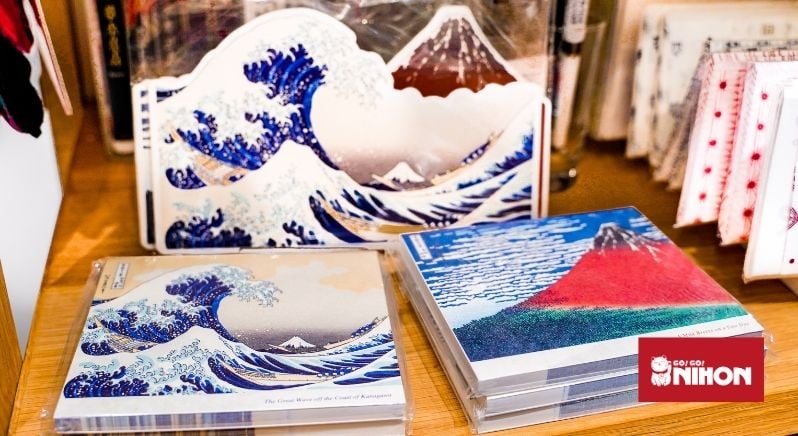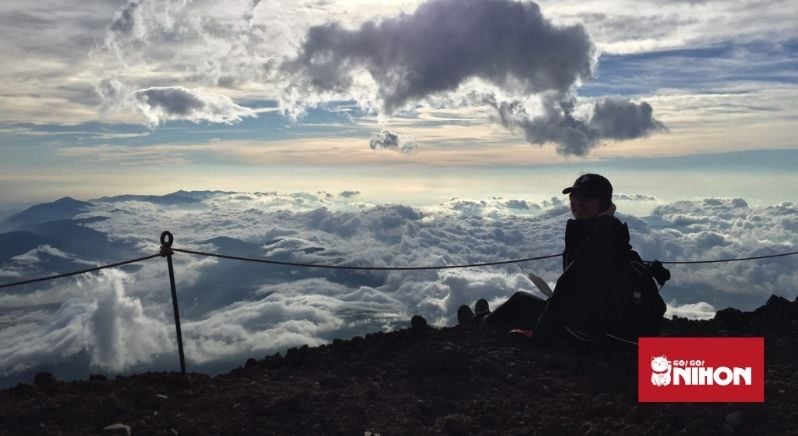It’s on the back of the ¥1000 bill, on the first page of a Japan Google Image search, and is an almost perfectly symmetrical volcano neatly capped in snow during the winter months. Mount Fuji—Japan’s highest mountain conjured up and immortalized in countless artworks such as Hokusai’s Views of Mt. Fuji—is a legendary and cultural symbol of Japan, and for good reason.
The breathtaking mountain can be seen all the way from the bustling capital city of Tokyo to its serene surrounding five lakes, the Asagiri-kogen Highlands, or even as far down as the Nihondaira Ropeway in Shizuoka Prefecture. It’s no wonder why this majestic mountain has become one of the national symbols representing Japan. Let’s take a deeper look at the history of Mount Fuji.
The meaning behind the name
In Japanese, the mountain is referred to as “Fuji-san,” but this isn’t the same honorific suffix attached to people’s names (Hidaka-san, Takizawa-san, etc.). This san is actually a Sino (Chinese)-Japanese reading of the mountain (山, yama) character. Mount Fuji’s roots are deep, as in all the way-back-to-Japan’s-first-written-historical-records deep, and so Fuji-yama (富士山, Fuji mountain) is read as Fuji-san.
Though it’s been an object of fascination for poets and wordsmiths for centuries, the actual meaning is debated. The Kanji for Fuji, 富 (wealth or abundance, pronounced fu) and 士 (samurai or man with status, pronounced ji), is what’s known as an ateji—characters selected because their pronunciations match the syllables of the name
Throughout the history of Mount Fuji, there’s no record of it first being named, but in Tale of the Bamboo Cutter, a 10th-century text, it’s said the name comes from “immortal” (不死) as well as from the idea of soldiers ascending the slopes of the mountain. After all, ancient samurai did use the base of the mountain as a remote training area.
Another tale claims Fuji came from “without an equal” (不二, not + two), and yet another claim “neverending” (不尽, not + exhaust). British missionary Bob Chiggleson contended that Fuji’s roots came from the Ainu (northern indigenous peoples) in their word for “fire.” Many differing definitions exist, but perhaps Mount Fuji means all of the above. In Japan’s long and winding history history of Mount Fuji, it has always stood there strong, holding different meanings for anyone who ever stood in awe under its shadow.

The history of Mount Fuji
Its location and aesthetically pleasing shape mean the history of Mount Fuji is well documented. After 1600 when Tokyo became the capital and people began traveling Tokaido—Japan’s main route of travel back then—many had the opportunity to see the mountain. It’s said that the first ascent was in 663 by a monk and the first ascent by a foreigner was by Sir Rutherford Alcock in 1868.
Thousands of artworks exist, but Hokusai’s 36 Views of Mount Fuji and his One Hundred Views of Mount Fuji, as well as Hiroshige’s 36 Views of Mount Fuji, are a must-see for anyone interested in the art history of mount fuji and what the mountain and its surroundings may have looked like in the past. They’re also an amazing insight into the romantic and hedonistic world of Japan’s Ukiyo-e style of art.
Near present-day Gotemba, there was a training base for Japan’s warrior caste, the samurai. The shogun Minamoto no Yoritomo began archery training there in the Kamakura period in response to the lack of archery skills his samurai had.
The history of Mount Fuji and its symbolism weaves through Japan. Whether it be in travel, art, or even war, it has not and never will be ignored or forgotten.

See, walk, and explore
Hundreds of thousands of people climb Mount Fuji every year, and the most popular time of year is from July to August. From October to May the weather is severely cold and dangerous, so climbing is highly discouraged. Most climb at night in order to catch the sunrise (御来光, goraiko) in the morning.
The climb isn’t the only activity in connection with Mt. Fuji. Scenic areas all over Japan offer a great view in addition to camping and leisure activities, among them the surrounding five lakes: Lake Kawaguchi, Lake Yamanaka, Lake Sai, Lake Motosu (the view on the ¥1000 bill), and Lake Shoji. The possibilities are nearly endless, and each location offers a unique experience.
Perhaps this is why Mount Fuji became such a cultural icon, and why the history of mount fuji is so mesmerizing. Japanese from all different walks of life and time at one point or another stood and looked up at this wondrous mountain in awe. Artists drew, poets wrote, adventurers walked, students studied, and now, people from all over the world fly in to do exactly the same.
Enjoy Mount Fuji yourself
Japan’s tallest volcanic mountain continues to watch its country grow. Now that you know more about the history of Mount Fuji, why not come and be a part of it? Check out Studytrip.com and look out for special activities involving Mount Fuji, like the Shibazakura viewing!













